All in one aquariums have a special place in my heart, after all, they are what got me into reefing in the first place. At the brink of joining the “salty side”, I faced a dilemma- either break down my current (at the time) freshwater planted tank and convert it to a saltwater aquarium, or set up a second, brand new system on the opposite side of the already cluttered living room. Admittedly, I crossed out the first option the moment I weighed it- I simply loved that tank and the relaxing properties it provided to my well being, so I was left with only one choice- furniture rearrangement and my better half’s seal of approval. The first took a weekend of hard work, the latter some begging mixed with car salesman tactics. With my only remaining problem being a budget so tight I wasn’t sure if I would end up bringing salt from the Atlantic, I began my journey through the saltwater side of the hobby.
OK, the budget wasn’t impossibly tight, but I had to start small or wait until I saved some cash for a “real” reef tank. Since patience was not my thing back then (that came later, after burning hundreds of dollars on rushed reef purchases), I turned my attention to AIOs, as people on reef forums codenamed them. Back in the dark days of reefing, the best advice for a newbie reefer wanting to start a reef tank was “go big or go home”. Small tanks were considered notoriously difficult to keep healthy long term, the thinking being that a small volume of water leaves much less margin for error. But with technological improvements in aquarium equipment and advances in reef tank husbandry, change came like greased lightning. Pictures of successful tiny reefs started littering the Internet and manufacturers of aquarium equipment filled the void opened by this new trend rather quickly, offering miniaturized versions of the most common reef tools, which in turn gave birth to the whole nano reef movement and the all in one aquariums associated with it. It was only natural to try to confine as much reef equipment in as little space possible and AIOs seemed to fit the bill perfectly.
AIO
The term “AIO” can be thrown around rather vaguely, as there is no unified definition of what is considered to be an all-in-one aquarium. It could be anything from a pre-drilled small aquarium fitted with its own little sump and nothing else, to a complete, self-sustaining system where the only part missing is the living reef itself. For the purpose of bringing some order to this debate, I will stand with the “classical” AIO concept that first made this type of aquarium famous: a free-standing tank of less than 50 gallons ( I can already hear nano reef purists screaming “50 gallons is not nano”) that has its filtration system, divided into 3 or more stages, hidden behind a false wall in the rear of the tank. The amount of additional equipment paired with the tank is of less importance (for the purpose of defining the type of system we are dealing with, that is), as long as the earlier stated principles are met.
Using these guidelines, I would like to present to you the topic of today’s review, a recent introduction into the Cobalt Aquatics family of products, named the C-Vue Aquarium Kit. This new line of aquariums, consisting of 4 models that vary by size (we have an 18g, 26g, 40g, and 45g tanks, or, for the rest of the world, a 68l, 98l, 150l, and 170l, respectively) and the amount of equipment included with each tank.
The model that was given to us for this review is the largest of the four, the 45g tank. I wrote “us” because this Definitive Review is unique for me; it is the first one that I have ever done remotely, outside of my home studio. The tank Cobalt Aquatics sent us, along with a matching black stand, was donated to a school project at Pratt Institute in Brooklyn, NY, where it has been hosting a community of Hippocampus erectus seahorses (and a few other fish) since its conception. We set up the C-Vue between a beautiful reef tank and an anemone dominated aquarium as a sort of Cobalt Aquatics feature tank that also includes their recently released C-Ray 200 LED light, which I reviewed a few months ago. It has been running for over 6 months now, growing into a great little habitat for the ponies and during that time, I’ve had a good chance to see how the tank works long term. In the next two paragraphs, I would talk a little bit about all-in-one tanks pros & cons and then focus on the C-Vue spec sheet before I give you my opinion on how the tank has been holding up…
ALL IN ONE TANKS CONS & PROS
I think I’m in a good place to review a brand new all-in-one tank, having had experience with these types of aquariums several times during my tenure in the hobby. My first and second reef tanks were AIOs and so was a 34g cube tank I set up after taking a long break from the hobby. Initially, my inpatient urge to upgrade to a bigger tank combined with my frustration at nano reef systems’ shortcomings, led me to tear down the second AIO, only to come back later appreciating the unique nature and the straight- forward approach AIOs offer. This now serves as a base for my review and I hope it will help you to decide if C-Vue, or any all-in-one tank for that matter, is the right choice for you.
Starting with the advantages AIO aquariums present:
- They are as straightforward as a reef tank can be. AIOs come with their own filtration system, circulation pump(s), and other equipment designed specifically to work within the tank’s volume. While no system is truly plug & play as some manufacturers claim, AIOs are the closest you can get to that experience.
- All in ones are very compact systems- a lion’s share of the life-supporting equipment can be contained behind the false wall of the filtration chambers and extra ones that don’t fit are usually hidden below the aquarium in the tank’s stand
- In general, AIO systems can be a very cost-effective solution for newbie reefers and other people on a tight budget.
- Small tanks, to which group most AIOs belong, are easier to set up and maintain. As I mentioned before, back in the days the opposite was true, but thanks to advances in reef equipment and reefkeeping husbandry, small reefs can bring a lot of joy and much less frustration than larger, more complicated systems
And the not so awesome features all in ones are known for, generally speaking:
- Weak upgradeability. This is by far the biggest flaw AIOs suffer from. There’s a moment in every reefer’s journey where the reef is doing so good it needs either more space or better management of the existing space and most AIOs don’t offer either. The most logical way to improve the limited real estate of a small saltwater aquarium is to introduce a sump to the system to shift equipment from the tank itself to another tank that serves as one big filtration system. Most AIOs don’t have that option and those that do are usually very expensive to begin with (and please don’t bring up hang on overflow boxes as an alternative to drilling for bulkheads, those things are outright scary to run unattended)
- Mediocre equipment- all in one tanks tend to be paired with equipment that, on paper, fulfills their all-in-oneness, but in reality is often of so-so quality and needs to be upgraded. Things like skimmers that don’t produce any foam, lights using yesteryear technology, or weird filtration chamber inserts that are hard to get to are often the reason people swap AIO equipment before they even fill the tank with water. Modifications to an AIO’s stock equipment is a frequent topic of online discussions.
- Limited filtration options due to lack of available space- adequate filtration in AIO tanks can be a challenge and often requires good planning on the aquarist’s side.
C-VUE- FIRST IMPRESSIONS
The C-Vue line of aquariums has a lot of similarities and use comparable equipment in their “guts”, but instead of going the usual nano reef tank series route of expanding cubes, Cobalt decided to make three rectangular footprint tanks and one that is closer to a cube in shape. The models are:
- C-Vue 18g with dimensions of 20″x16″x13″ (51cm x 41 cm x 33 cm), made of 6mm glass
- C-Vue 40g 36″x18″x14″ (91 cm x 46 cm x 33 cm), 8mm glass
- C-Vue 45g 25″x22″x19″ (64cm x 56 cm x 48 cm), 8mm glass
The C-Vue line introduces a clever, dual overflow design rarely seen on these sized tanks- there are two overflows on the opposite rear ends of the false wall and, depending on the model, one or two outlets positioned near the center axis of the tank. Moreover, the two larger setups, C-Vue 40g and C-Vue 45g, have dual return pumps in the center filtration chamber that work independently from each other. The total advertised turnover for each model is as follows:
- C-Vue 18g 165 gph (625 lph)
- C-Vue 26g 264 gph (1000 lph)
- C-Vue 40g 528 gph (2000 lph)
- C-Vue 45g 528 gph (2000 lph)
The rear chamber of each of the 4 models are identical in function and the only difference between tanks is the width and height of compartments each model has. We have two overflow chambers with included filter sock holders and 200 micron filter socks with square mounting rings (proprietary to Cobalt Aquatics), an additional section separated by a glass divider on each side, designed for extra filtration media and/or additional equipment, and a center chamber where return pump(s) reside. Take a look at these diagrams with dimensions for each tank’s filtration chambers:
Moving on to the actual glass panels C-Vue tanks are made of, we have a couple of positive surprises and one radical shift from the established idea of putting together a glass aquarium. C-Vue glass panels have mitered corners with beveled edges, something I’ve never seen before in any tank. I am not sure if the extra surface area for silicone adhesive to hold on to provides any real structural advantage, but the end effect is that the traditional silicone line at the edges is much less visible with C-Vue. Speaking of aesthetics, the three viewable panels (front and sides) are made out of tempered, low-iron glass and a good quality one for that matter- one that has a very faint blue hue to it, evidence of its low iron content. The remaining two (back and bottom) are not tempered and therefore can be drilled to accommodate external plumbing. The filtration portion of the tank has black plastic laminate on the outside, designed to make all the equipment and the nastiness of the usual reef tank “backroom” disappear. Overall, the tank is well put together, with all glass panels aligned perfectly and glued with a clean, even silicone job throughout.
I’m assuming that the majority of C-Vue users will opt out of drilling their brand new aquarium, at least initially, and instead would like to use the internal filtration setup. I must say, Cobalt Aquatics did their homework catering to this crowd. On the display side, we have a black matte, unobtrusive flat wall common in these type of aquariums, minus the dual overflows and dual outlets (on the 45g I’m reviewing) that clearly stand out. The overflow grills look large enough to handle a good amount of flow, while the output pipes poking out of the center back have directional nozzles, which when pointed at a right angle, help create a more chaotic flow pattern.
The flipside of the back wall is where Cobalt’s clever design choices really shine. Outermost chambers on both sides act as filter sock holders and are large enough to accept some additional mechanical filtration on the bottom, towards the direction of the flow. These filter socks, made out of a 200 micron filtering material, are quite unique as well- they have a D-shaped ring with a collapsible carrying handle for easy removal and are as big as space allows them to be. The next chamber, identical on both sides, has a baffle system that keeps water level constant, regardless of water loss due to evaporation. This is where your skimmer would go, if you had one on your system. As I mentioned in the previous paragraph, all-in-one tanks suffer from a limited choice of equipment, but recent years experienced a blowout of new nano-size skimmers and I have found at least two decent models that would fit C-Vue 45 skimmer chamber (opening size is 4.75 x 4.75 “ or 12 x 12 cm and the skimmers I’ve researched were Innovative Marine Skimmate Ghost and Aquatic Life 115 Mini). With two pumps driving the flow through these mirrored chambers independently from each other, you can set up a protein skimmer on one side and some chemical media bags on the other. C-Vue doesn’t come with any media racks, but you can either DIY them yourself out of egg crate or buy professional ones from companies such as InTank. Good old mesh bag will do too, I was doing that in one of my nano reefs with no problems whatsoever.
C-Vue’s center chamber leaves nothing to desire- it’s big, roomy, and easy to access. The two pumps, each delivering 264 gph of flow, are compact enough so that the top of the chamber can be utilized for additional filtration media or even a small refugium with some macroalgae. It’s worth mentioning that the pumps are easy to reach and can be swapped for something larger if needed, or, as in our example, utilized to feed auxiliary equipment.
In summary, C-Vue’s use of available space is excellent and the clever design choices truly add to its overall value.
STAND
The C-Vue 45g we received for this review came with a matching black matte stand. The stand is similar to many assemble it yourself aquarium stands that come with all-in one tanks. It’s not the strongest stand out there, but it holds the weight of the aquarium filled with water just fine. It has two pass-through holes for cables, an adjustable shelf, and a sturdy bottom. The finish resembles that of an FRP (fiberglass reinforced plastic) panel common in restaurant kitchens, which is good because it makes it water resistant. Two hinged doors open to 135 degrees and allow for full accessibility to the stand’s interior. The included shelf has a cutout in the back to pass wires and hoses through.
I don’t really know how to judge this stand without spilling my carpentry background bias. I guess it would be fair to say that the C-Vue matching stand is adequate to hold the weight of the tank and quite solid for being a modular piece of furniture. Would I put the tank on it if it was sitting in my apartment located on the 5th floor of an residential building? Nope, but for me, that’s true for any stand of this type, I’m just not comfortable enough to put an aquarium on anything that’s not made out of 1” thick marine plywood. But the tank has been standing on the matching stand for over 6 months now and it’s as good as new. Plus, it is very spacious and functional. We’ve had zero problems fitting a 1/10 hp chiller (for seahorse habitat needs, fed by the second return pump provided with C-Vue) plus few maintenance supplies inside of it and there is enough space for a decent size, square footprint sump in case you’d like to incorporate one. The cabinet for the 45g version of C-Vue costs $ 240.97.
SETTING UP THE TANK & LONG TERM OBSERVATIONS
At the time of this write-up, Cobalt Aquatics C-Vue 45g has been running flawlessly for more than 6 months in the Pratt Institute’s fish room. We had a specific goal in mind- to dedicate this tank to a group of Hippocampus erectus seahorses and so far, it has been a great success. Randy Donowitz and his team of dedicated reefers were able to breed these seahorses and rear the youngsters into adulthood. Randy even caught one of the males giving birth on live video!
Currently, the tank hosts a trio of seahorses, a pair of captive-bred mandarin gobies, and a pair of clownfish. The tank is mostly softies with some LPS corals and it’s lit by Cobalt’s own C-Ray 200 LED light. The stock return pumps proved to be more than enough flow for this setup (seahorses do not enjoy strong flow) and we were able to utilize one of them as a feed pump for an in-line chiller, placed inside the stand. We used Cobalt’s low profile Neo-Therm heater in the middle chamber and opted out of any additional filtration besides a bag of carbon and stock filter socks.
The whole aquarium, using mostly stock equipment, runs smoothly and with zero hiccups. The return pumps are dead silent and the overflows create minimal noise that disappears in the room’s ambiance. So far, the tank has been trouble-free. I really enjoy the filter socks having these little carrying handles, it makes the job of swapping them out a breeze. I also admire the relatively large (compared to other all in one tanks I’ve had in the past) filtration chambers and the fact that even a single return pump delivers a good amount of turnover so that the other one can easily be used for something else. The stand, well, I must say it grew on me, not because I suddenly found it to be an extraordinary piece of furniture, but because it is holding on really well after taking some serious saltwater beating during the time period we’ve tested it. I would still build a custom stand for it if C-Vue was to sit in my living room, but, the stand is fine. Not extraordinary, but fine, just fine.
VERDICT
If someone asked me what’s the one thing I like the most about Cobalt Aquatics C-Vue 45g aquarium, I would answer with one word: versatility. I’ve pointed out AIO tanks’ two biggest flaws as limited upgradeability and the mediocre equipment these type of aquariums come with. I found that with the C-Vue line, Cobalt Aquatics did their best to address these two problems without sacrificing their product’s overall value. On the upgradeability part, we have the rear and bottom panel being non-tempered and therefore easy to drill through, a feat that allows us to transform C-Vue into a full-fledged reef tank with all the complexity of sump and equipment that comes with it, if needed. The mediocrity part was resolved by offering the minimum amount of included equipment while keeping the price low, simple as that. I personally like that approach a lot. The only real equipment that comes with C-Vue, the return pumps, are of good quality and rated for more than enough flow through the tank they are paired with.
The price point is where the tank really shines, you simply get a lot bang for the buck. At the time of writing this review, the tanks cost:
$ 229.97 for the 18 gallon
$ 286.97 for the 26 gallon
$ 389.97 for the 40 gallon
$ 452.97 for the 45 gallon
It’s a really good pricing scheme for what you’re getting, in my opinion. Sure, there are cheaper tanks on the market, but the C-Vue line belongs to the upper shelf, where aquariums tend to cost more than what Cobalt asks for theirs. Let me frame it this way, if I was going to set up a small aquarium and was shopping around, I would definitely give Cobalt Aquatics a serious thought. I would also throw a sump on this thing to be able to run an oversized skimmer and overstock the tank, but hey, who doesn’t like fish… Anyway, check out C-Vue by Cobalt Aquatics; when you’re planning a new reef in your life, it does not disappoint!
To learn more about C-Vue line, go to https://www.cobaltaquatics.com/

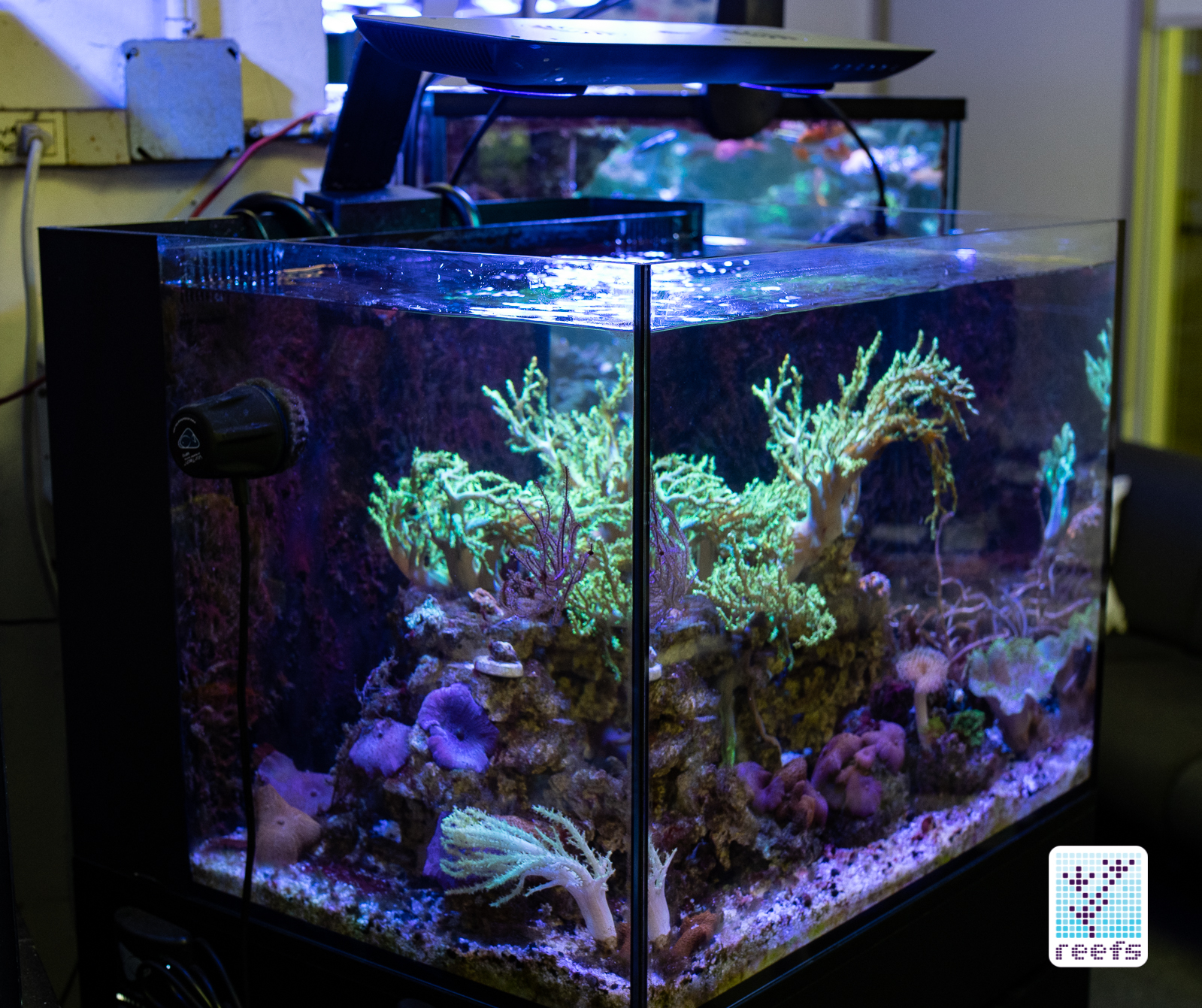
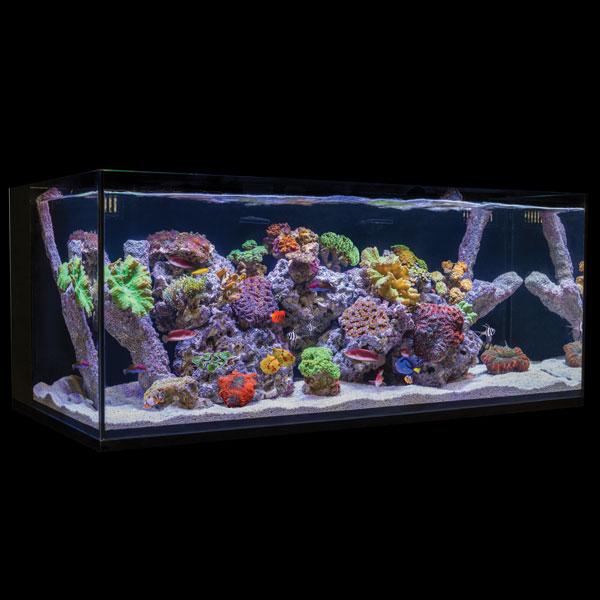
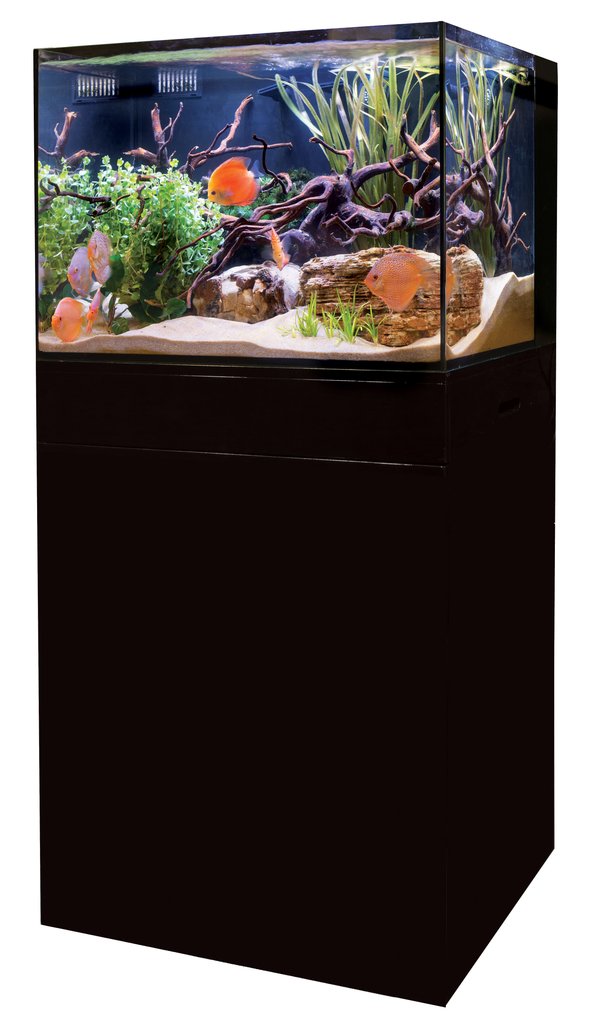
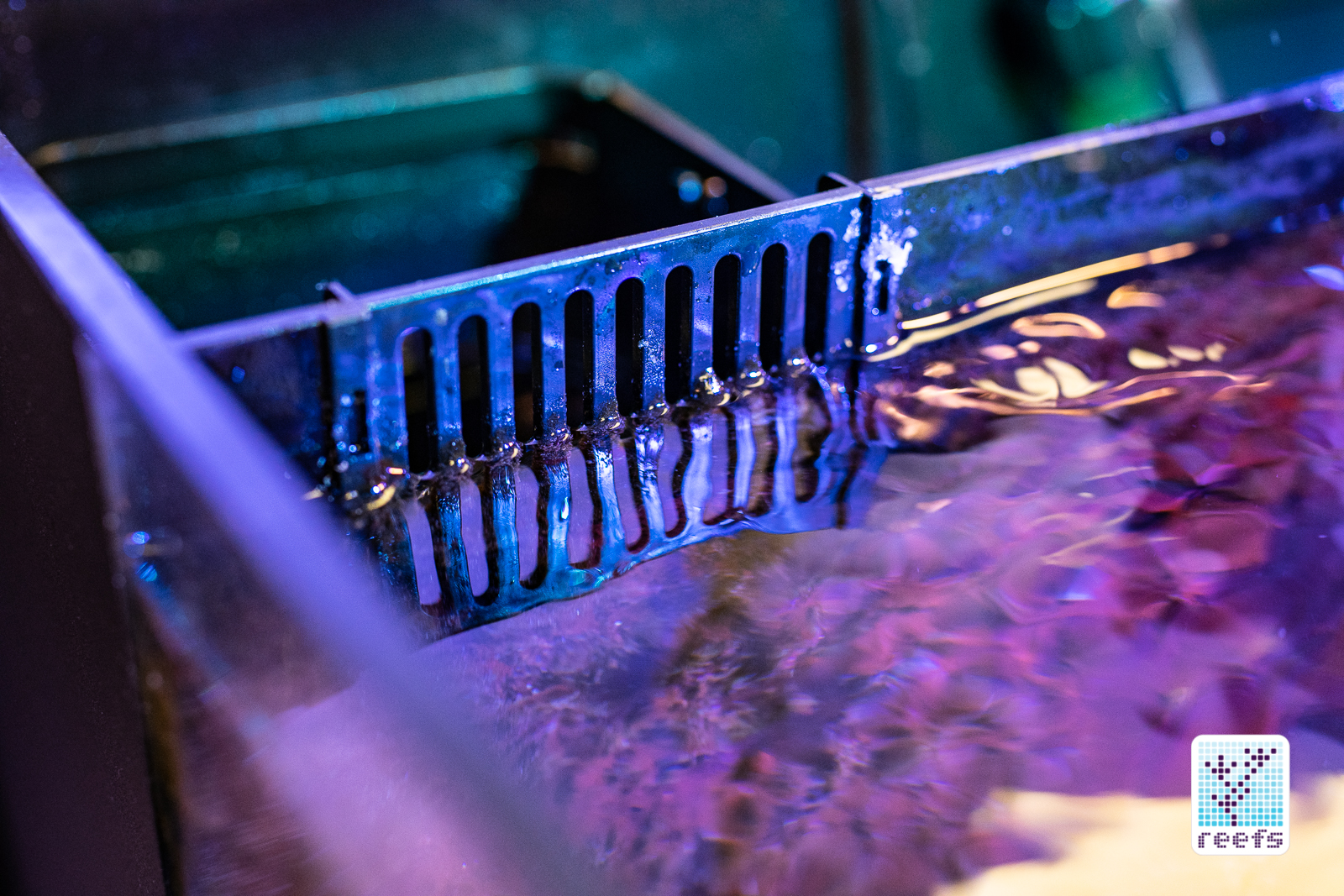
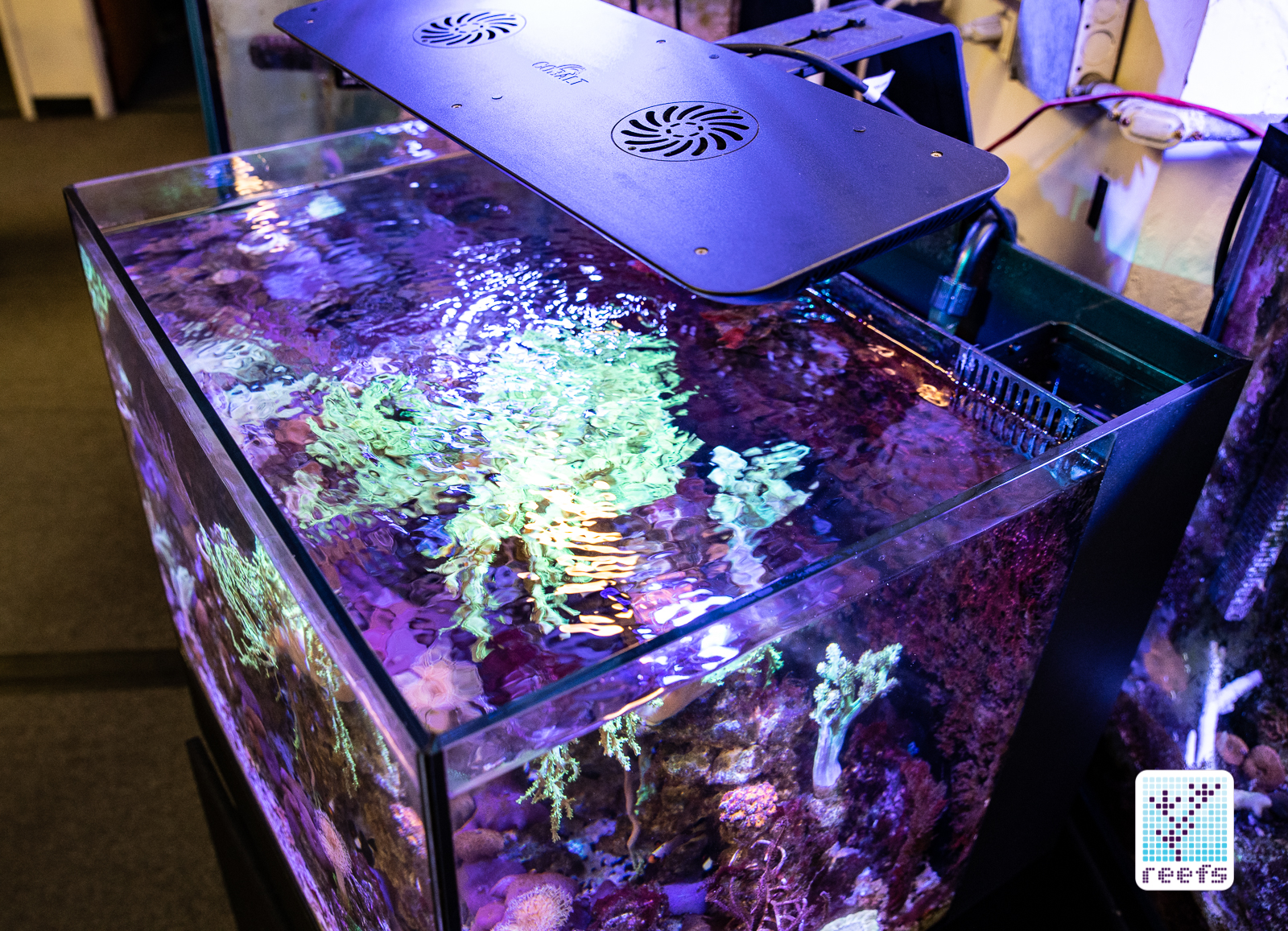
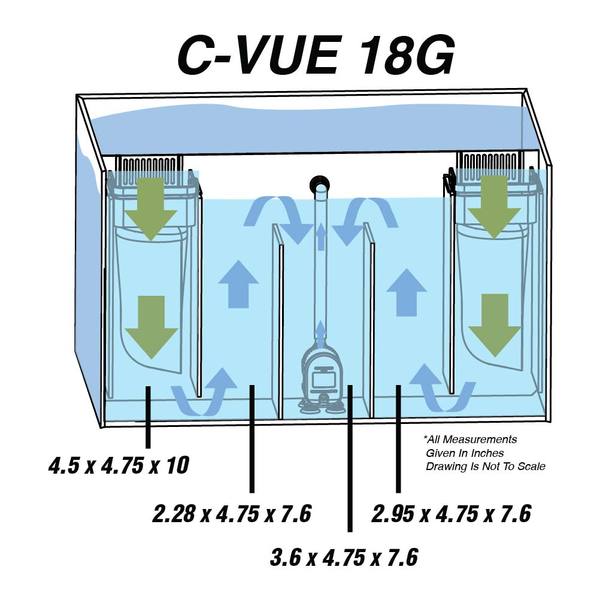
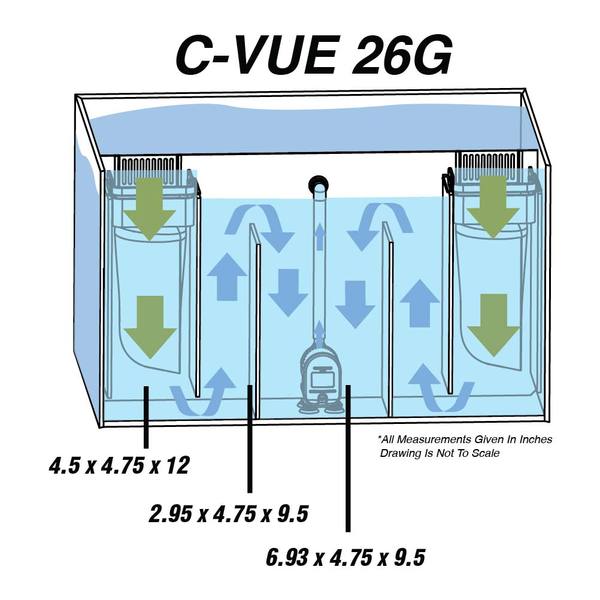
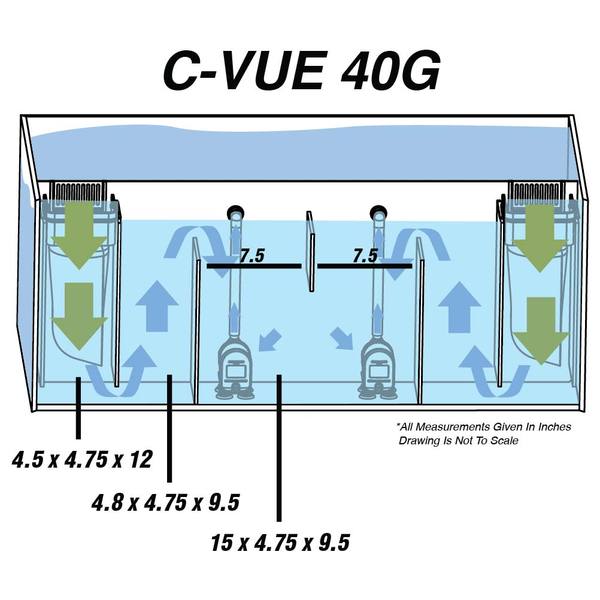
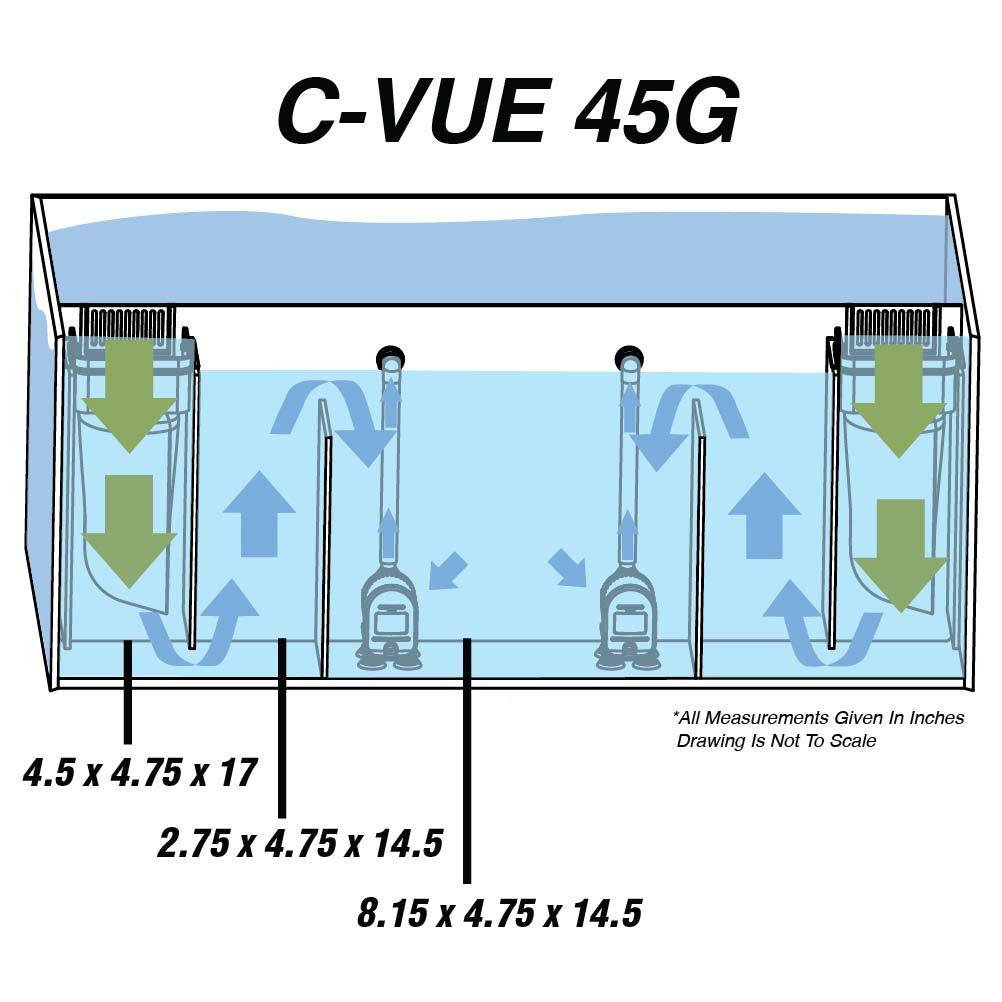
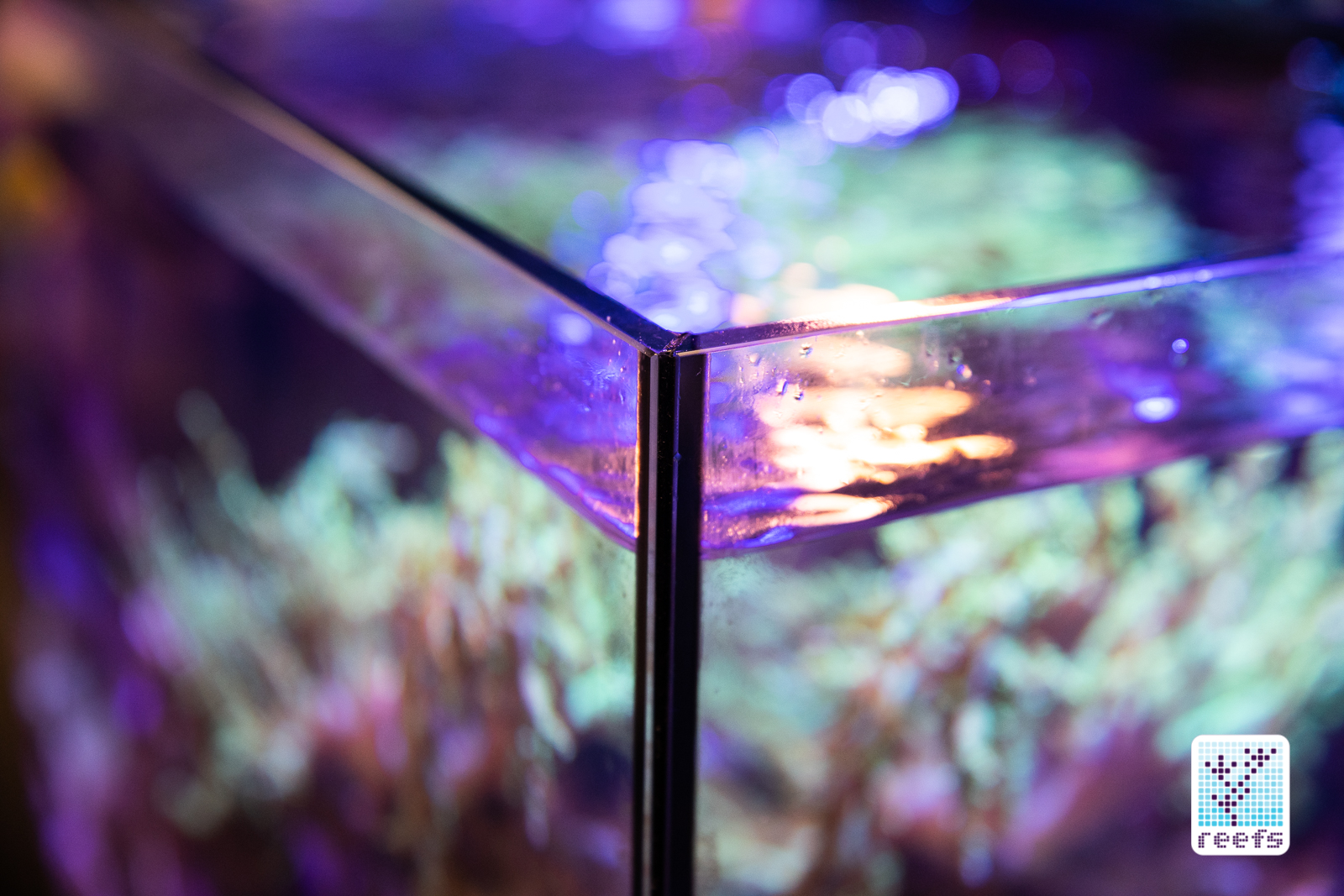
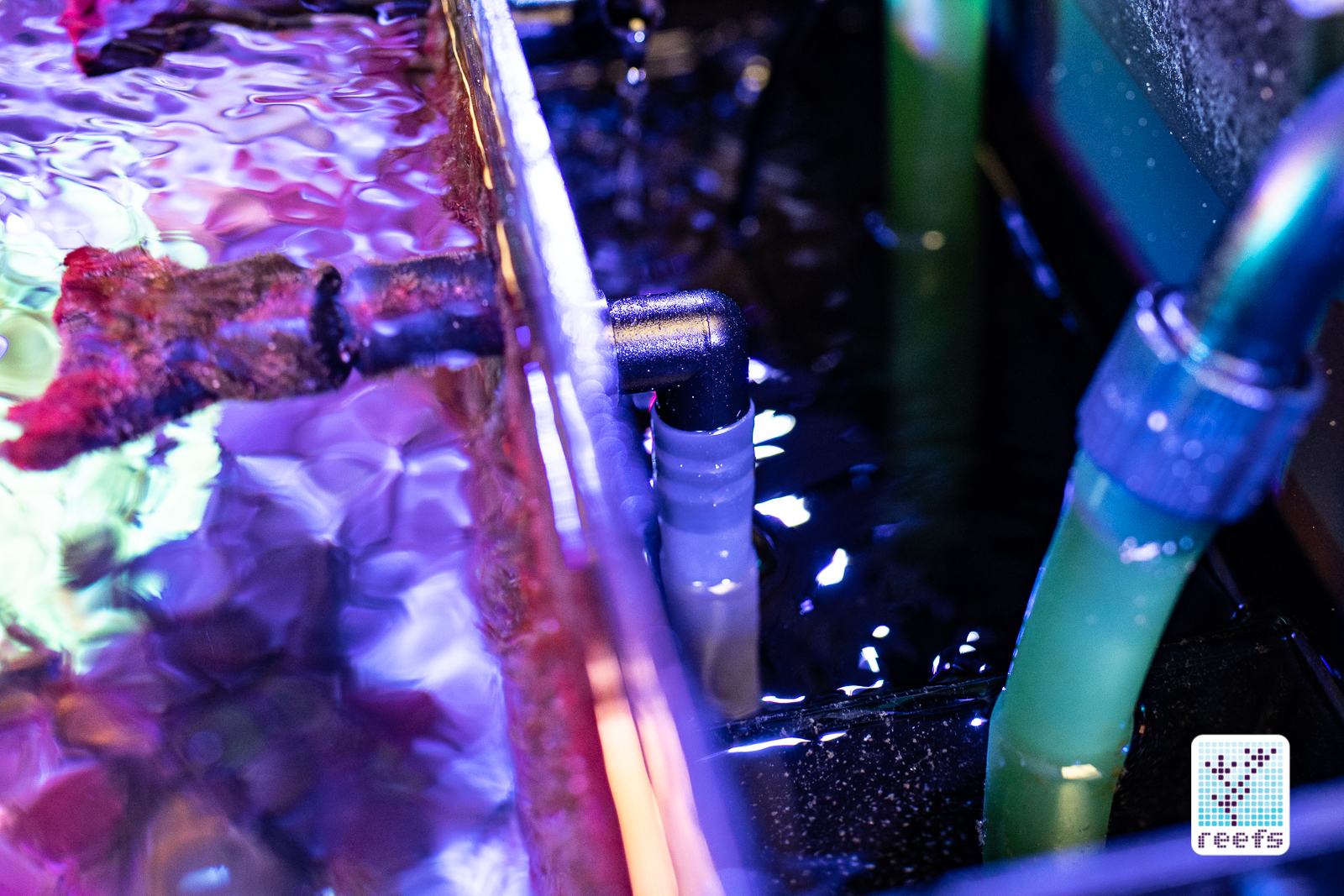
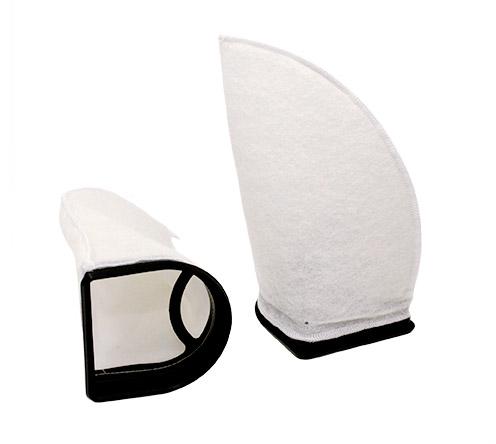
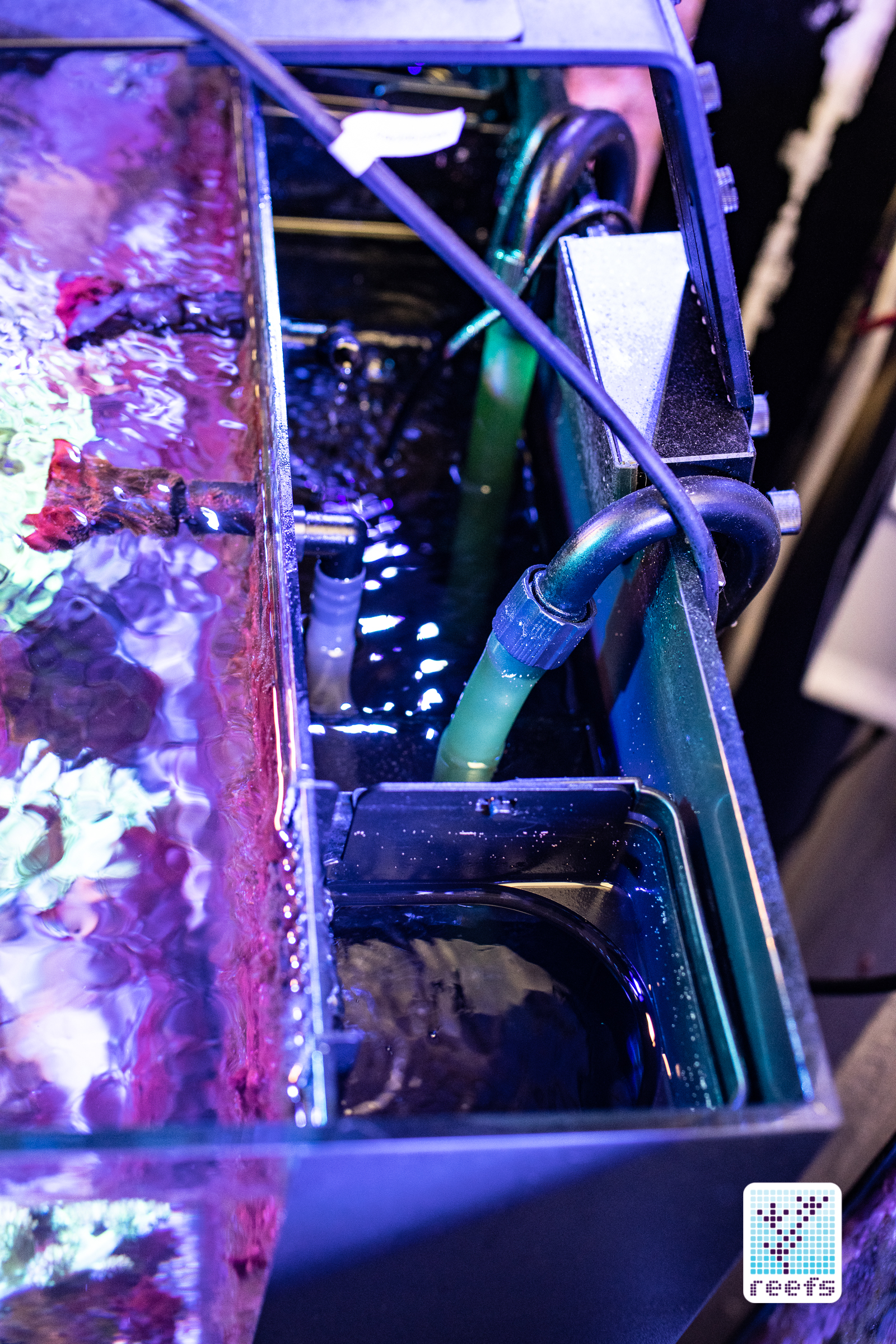
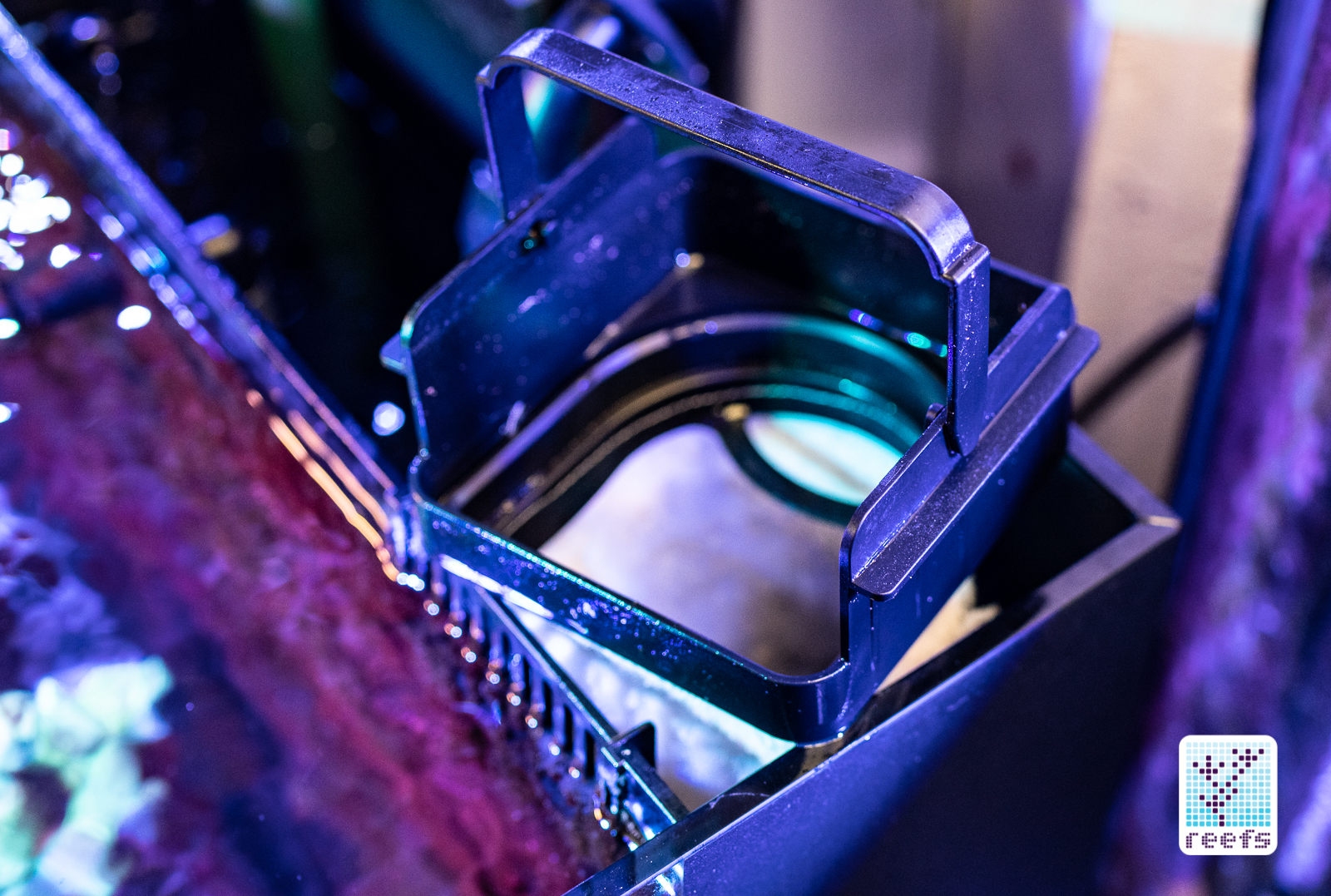
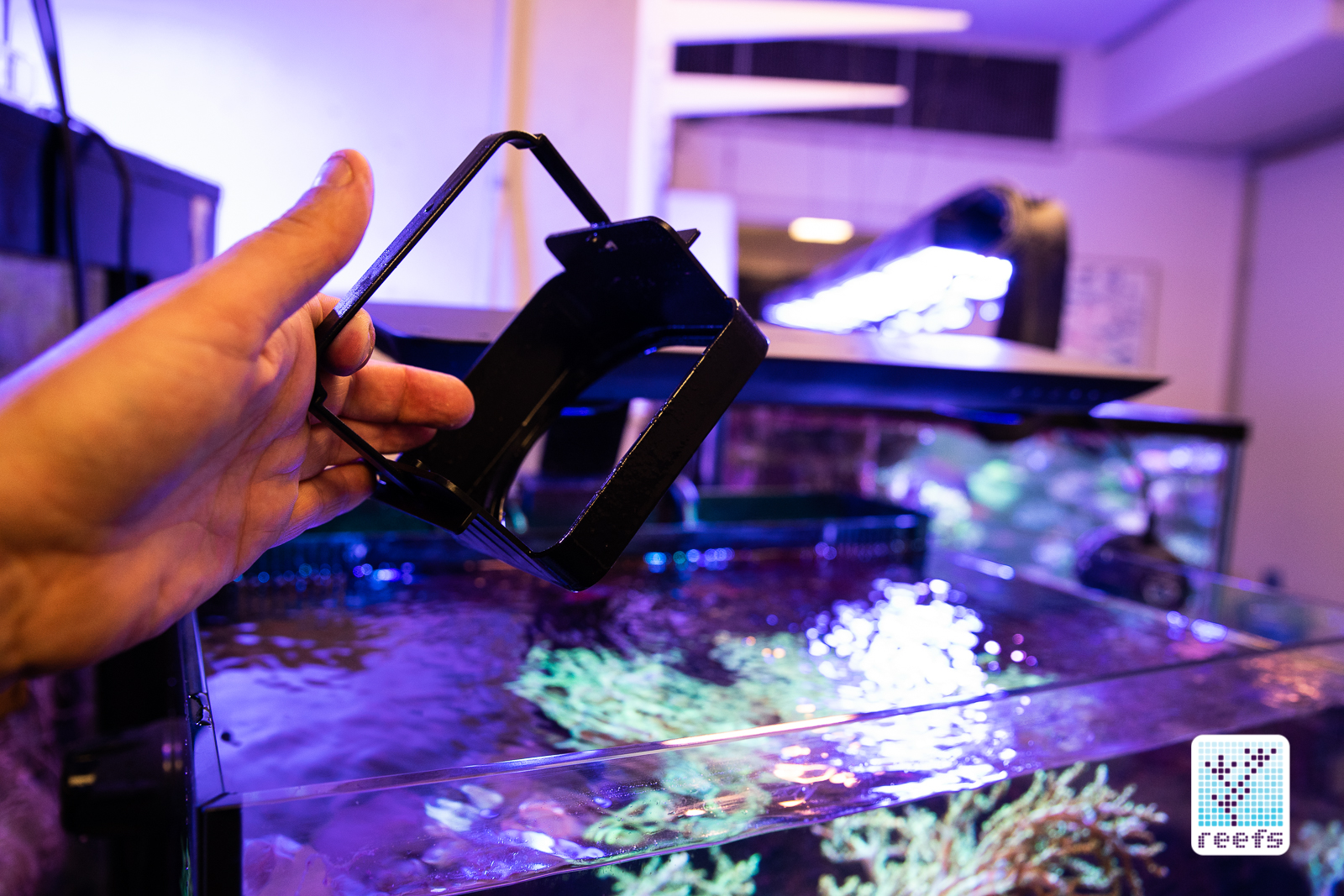


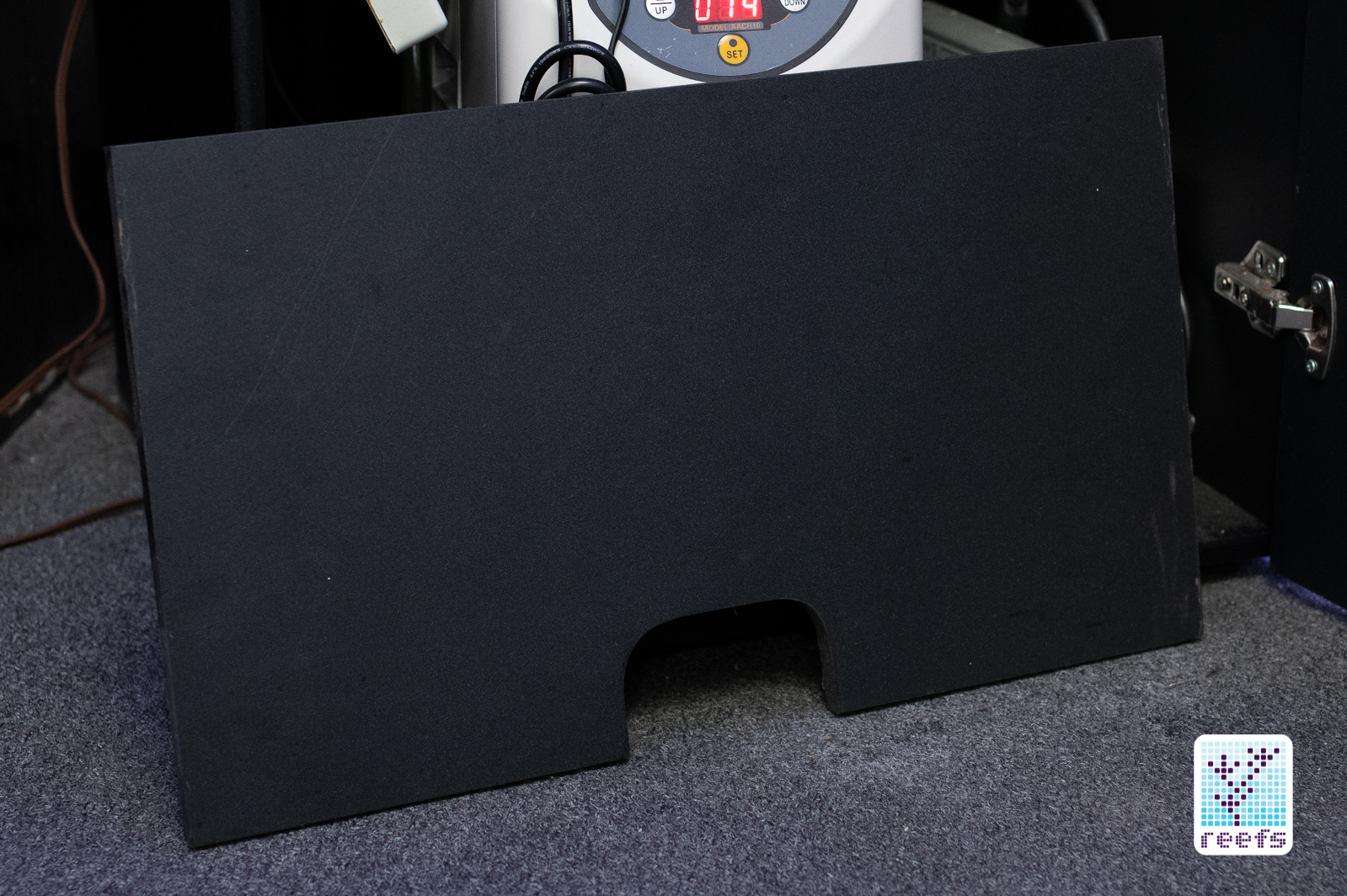
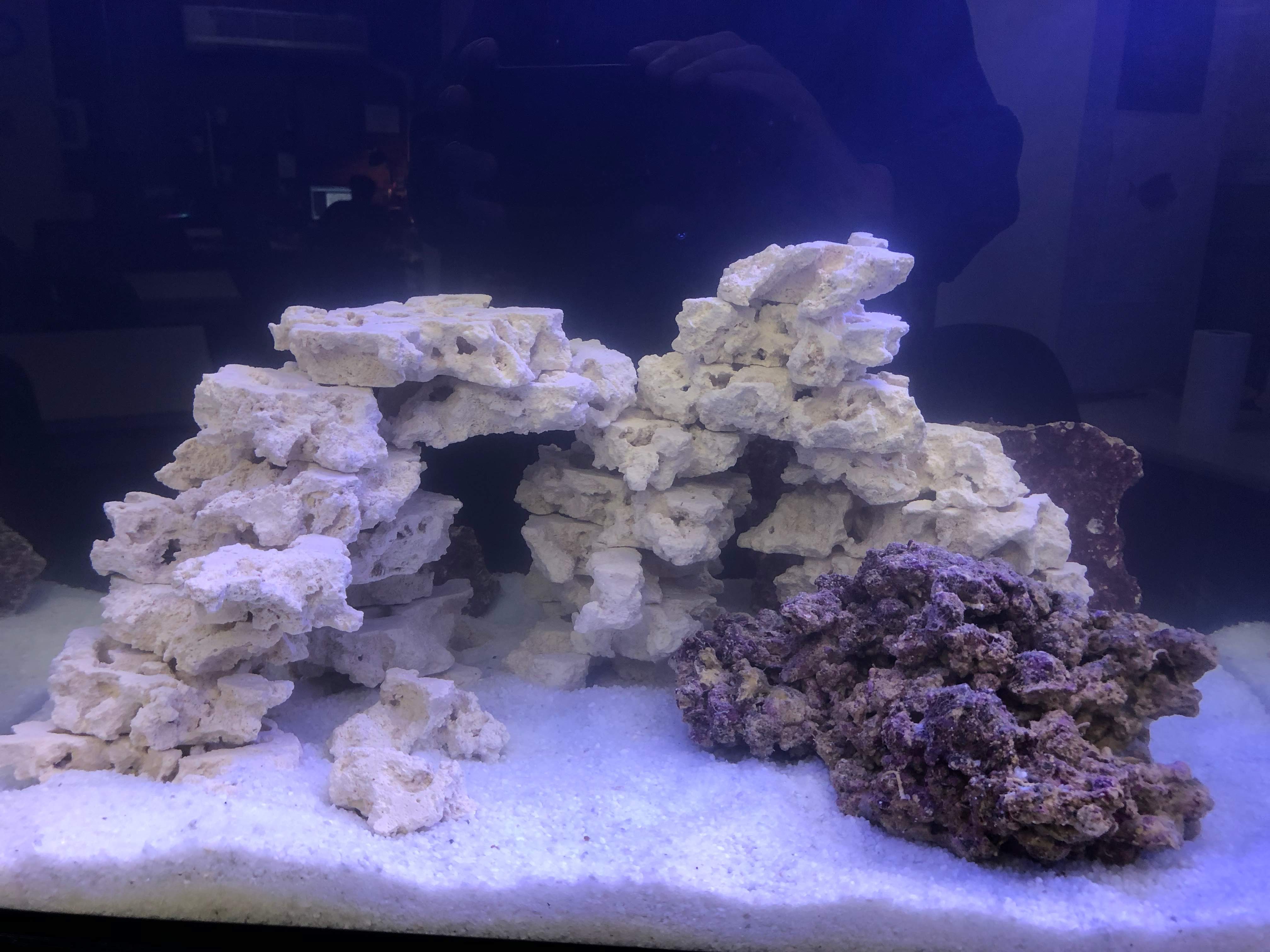
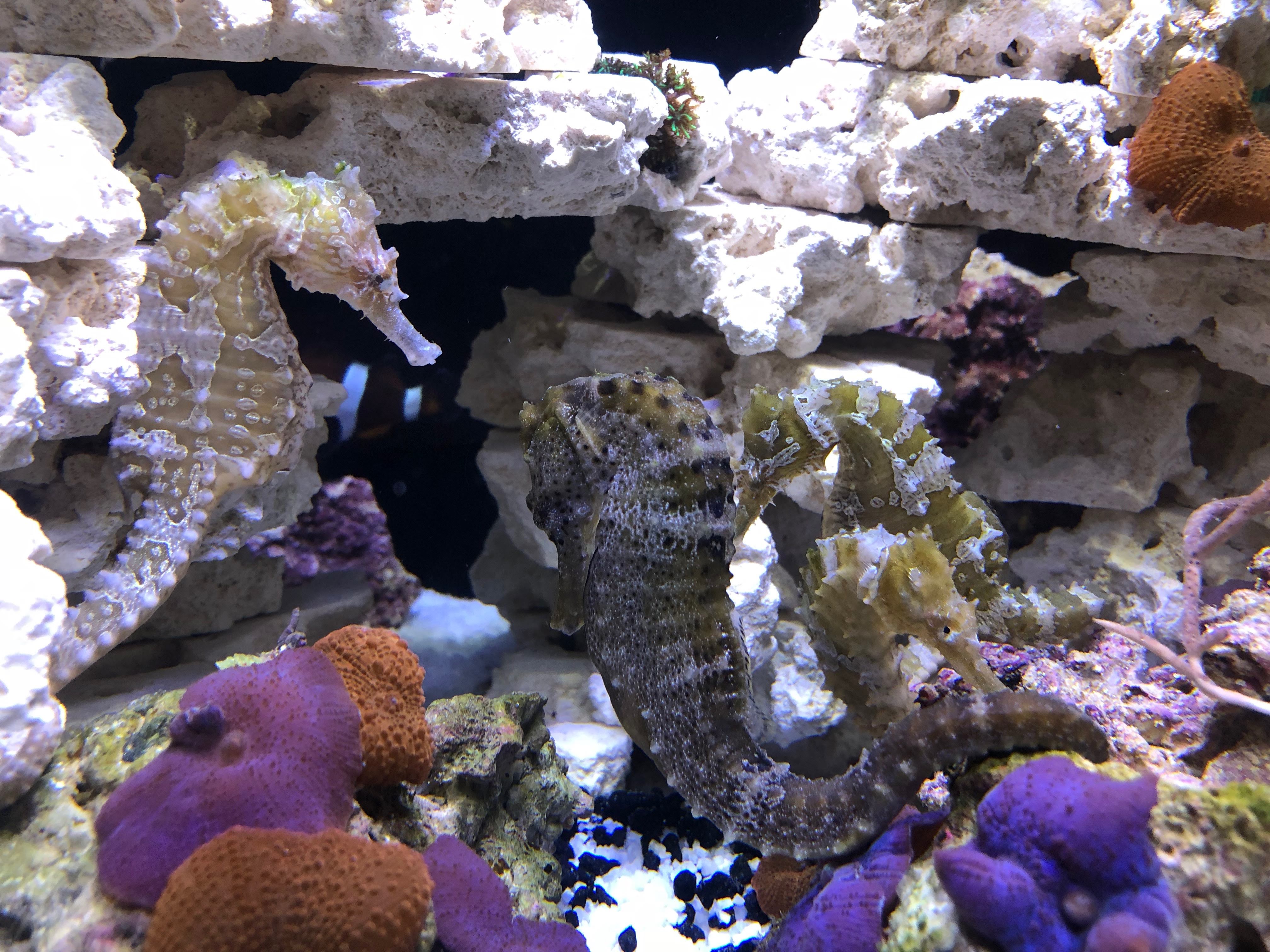
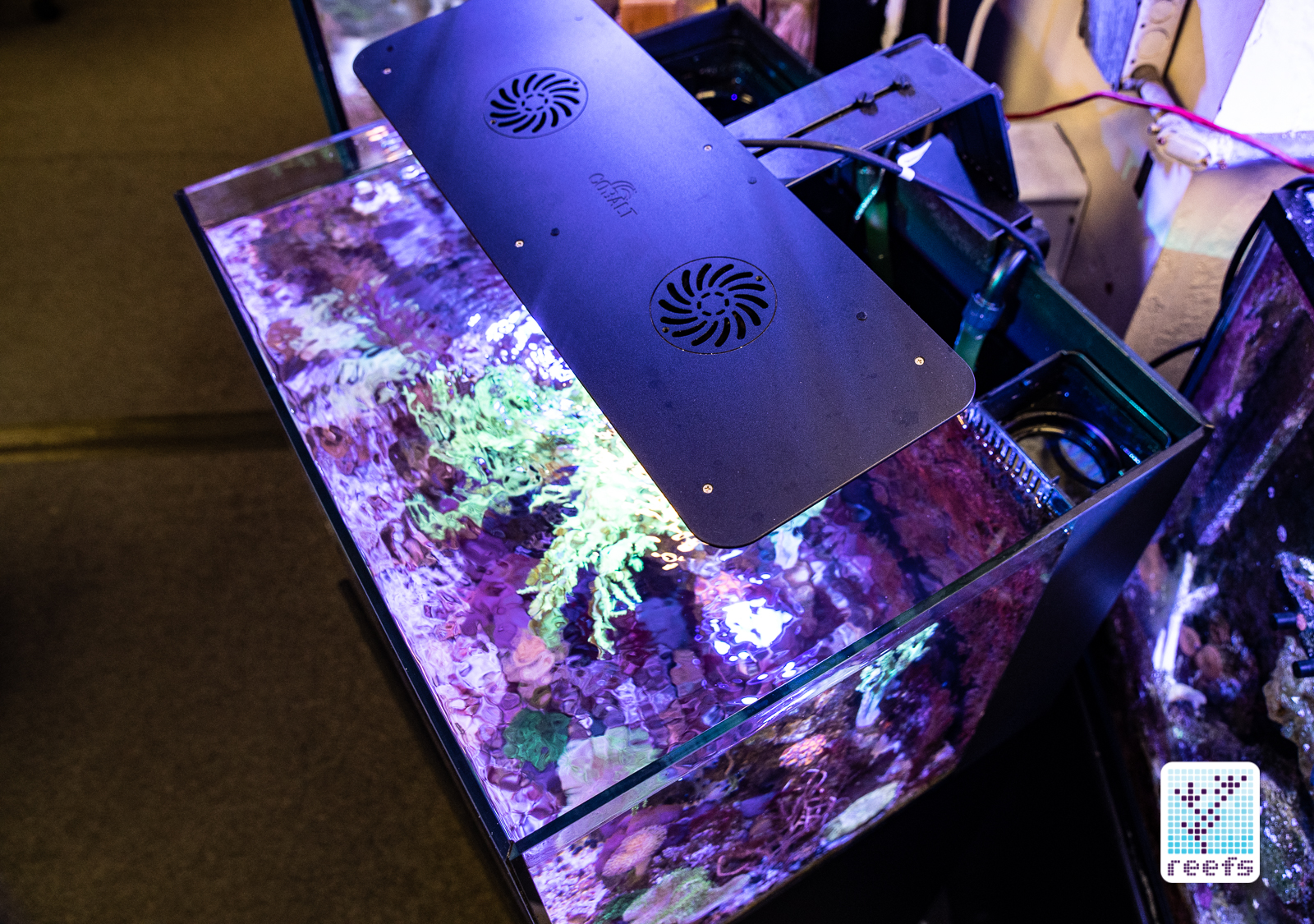
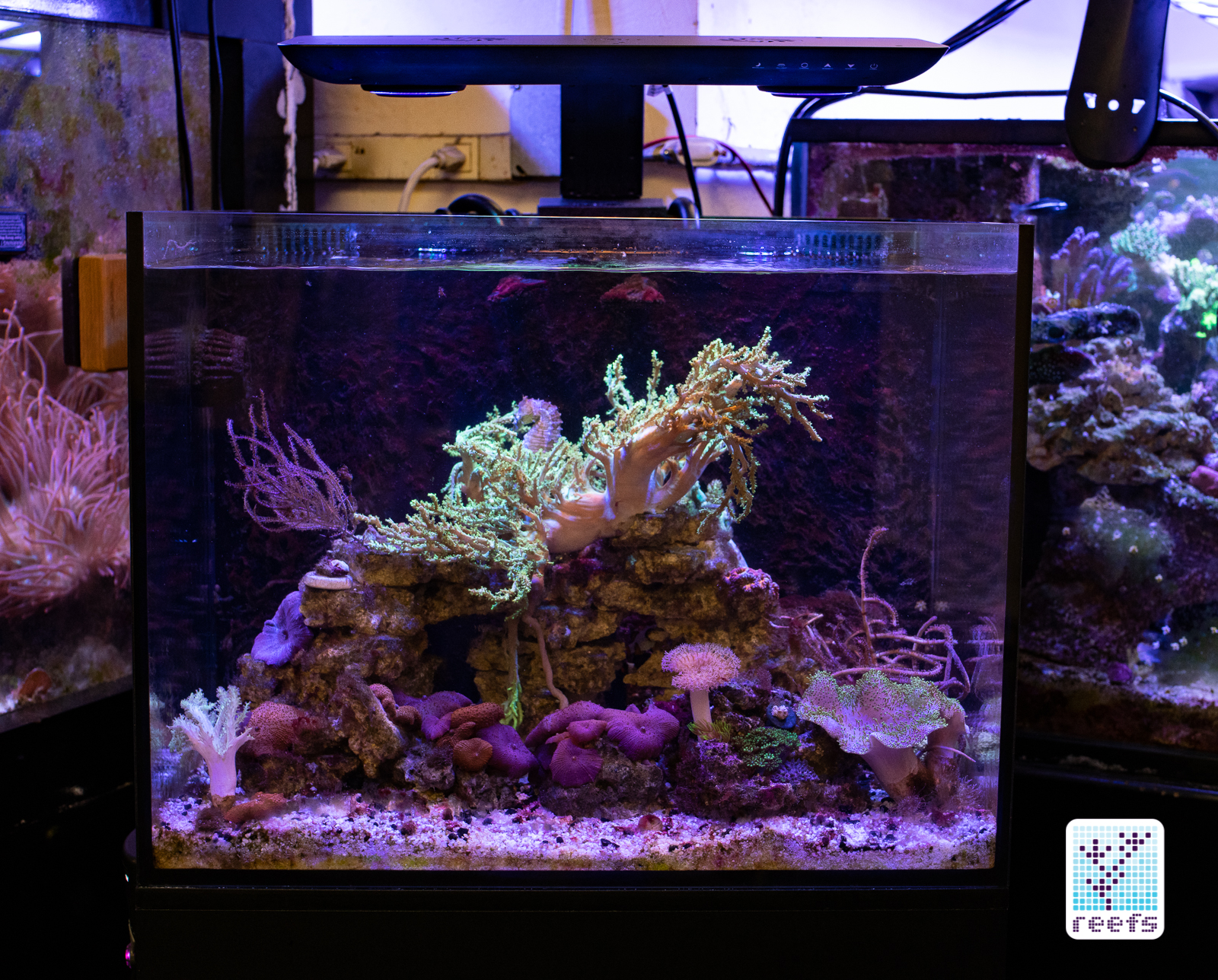
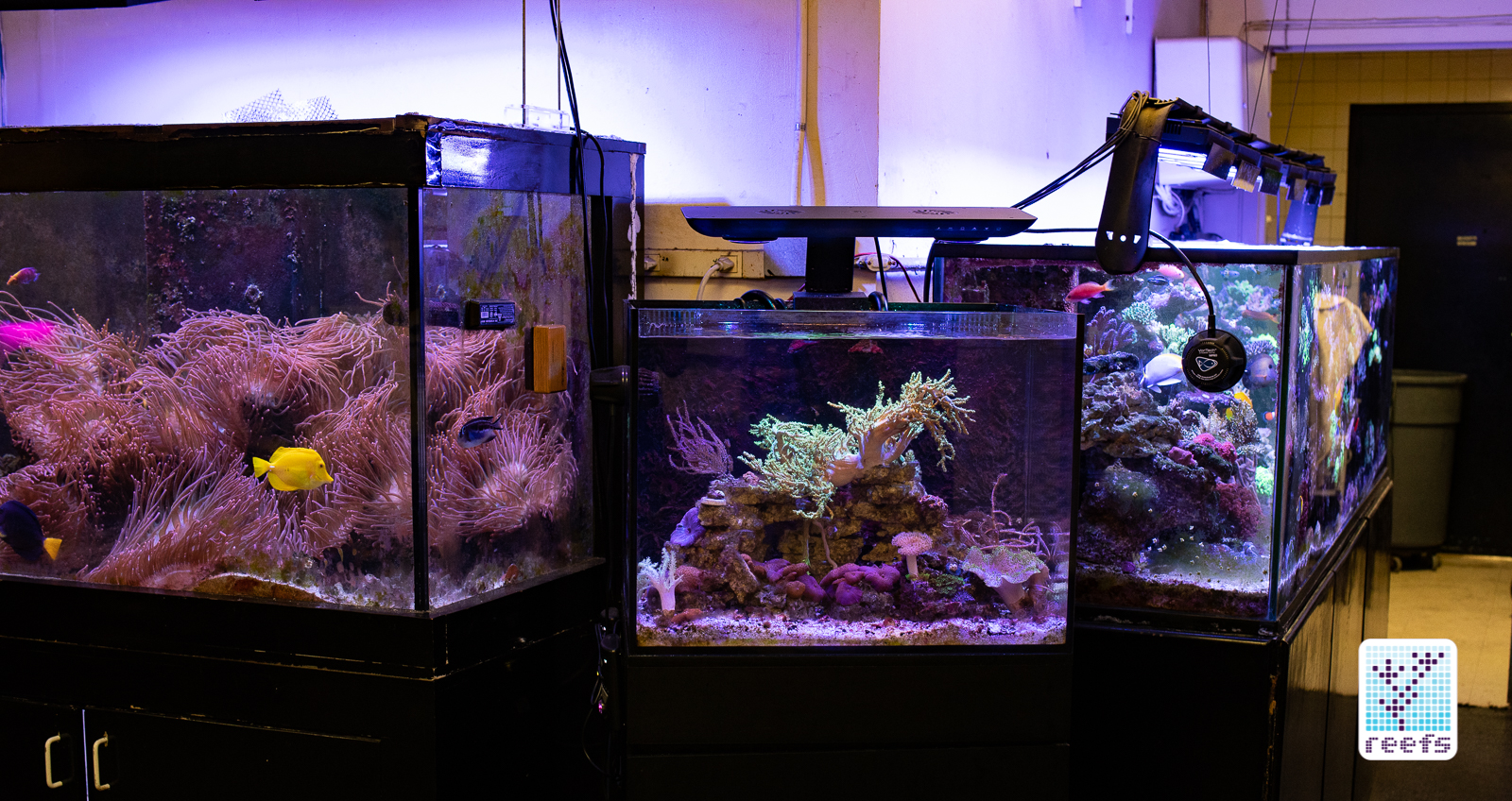
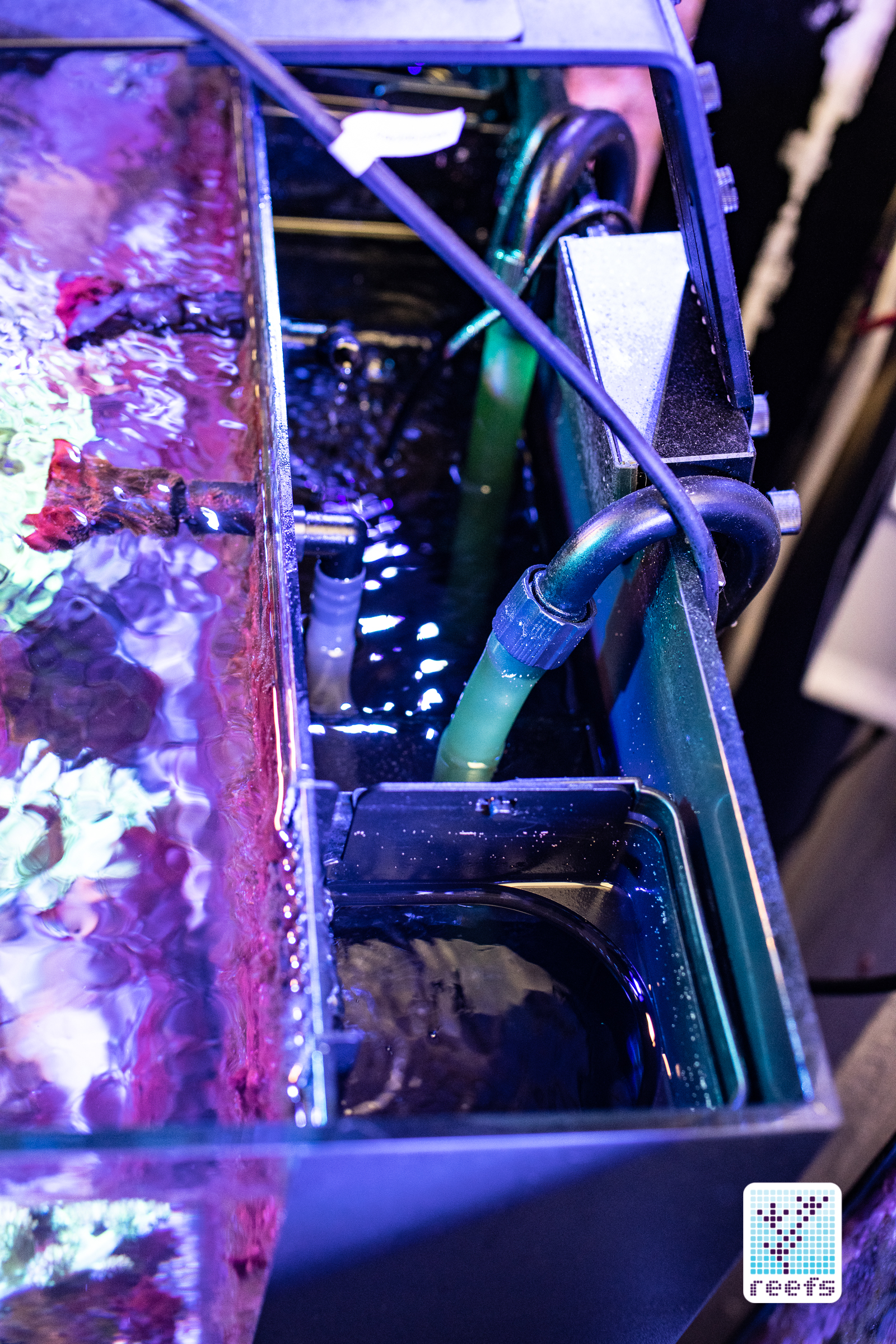
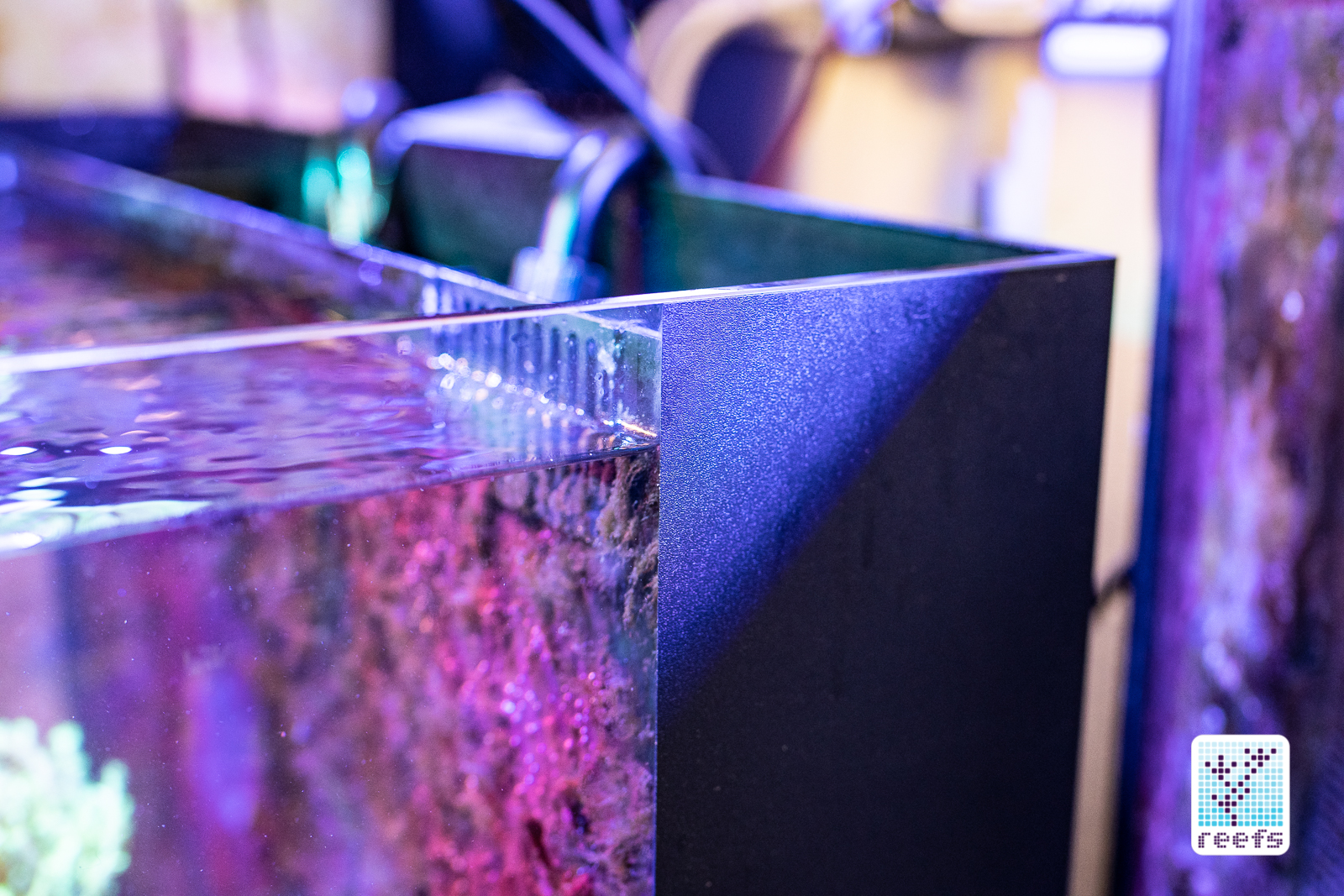
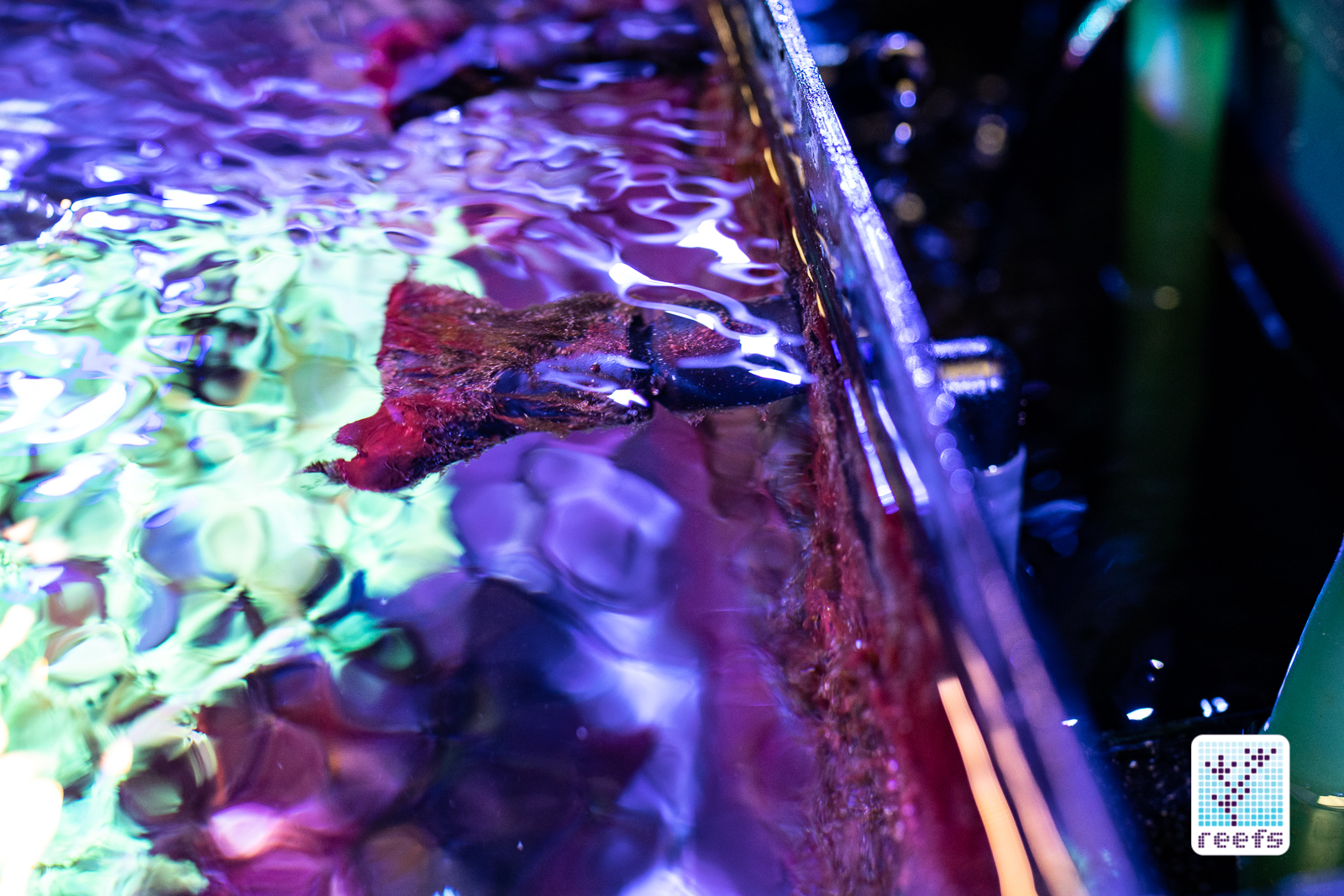
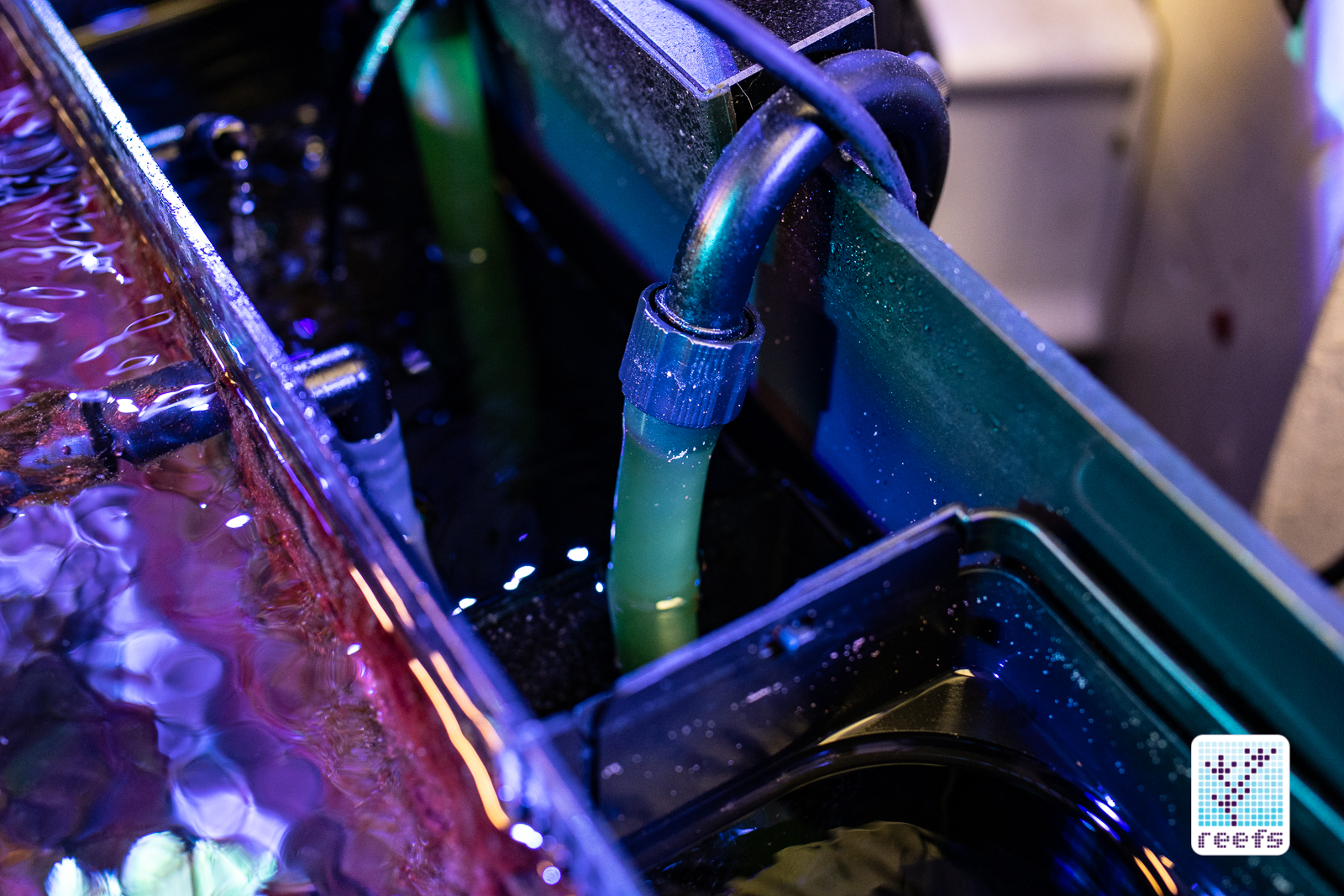
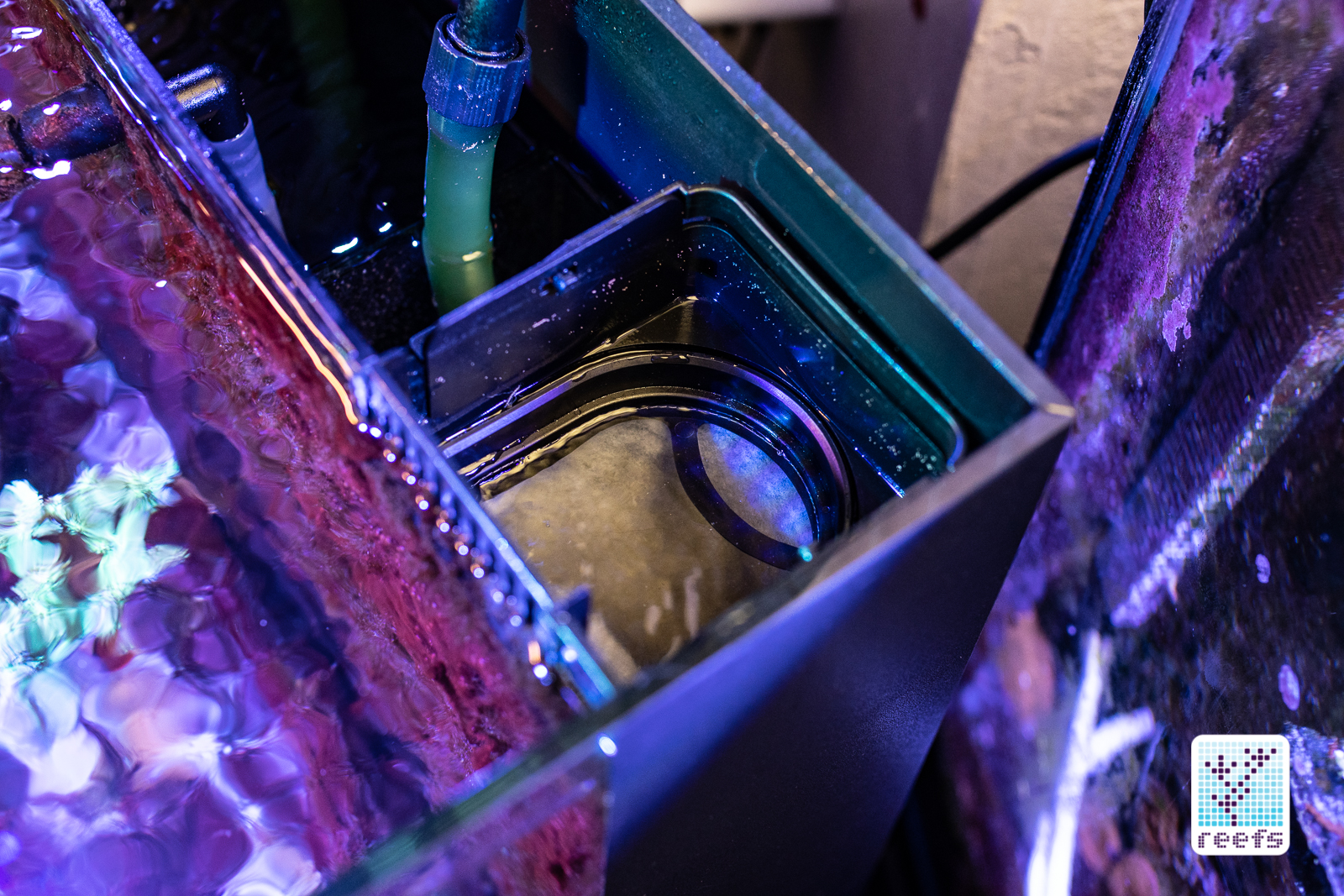
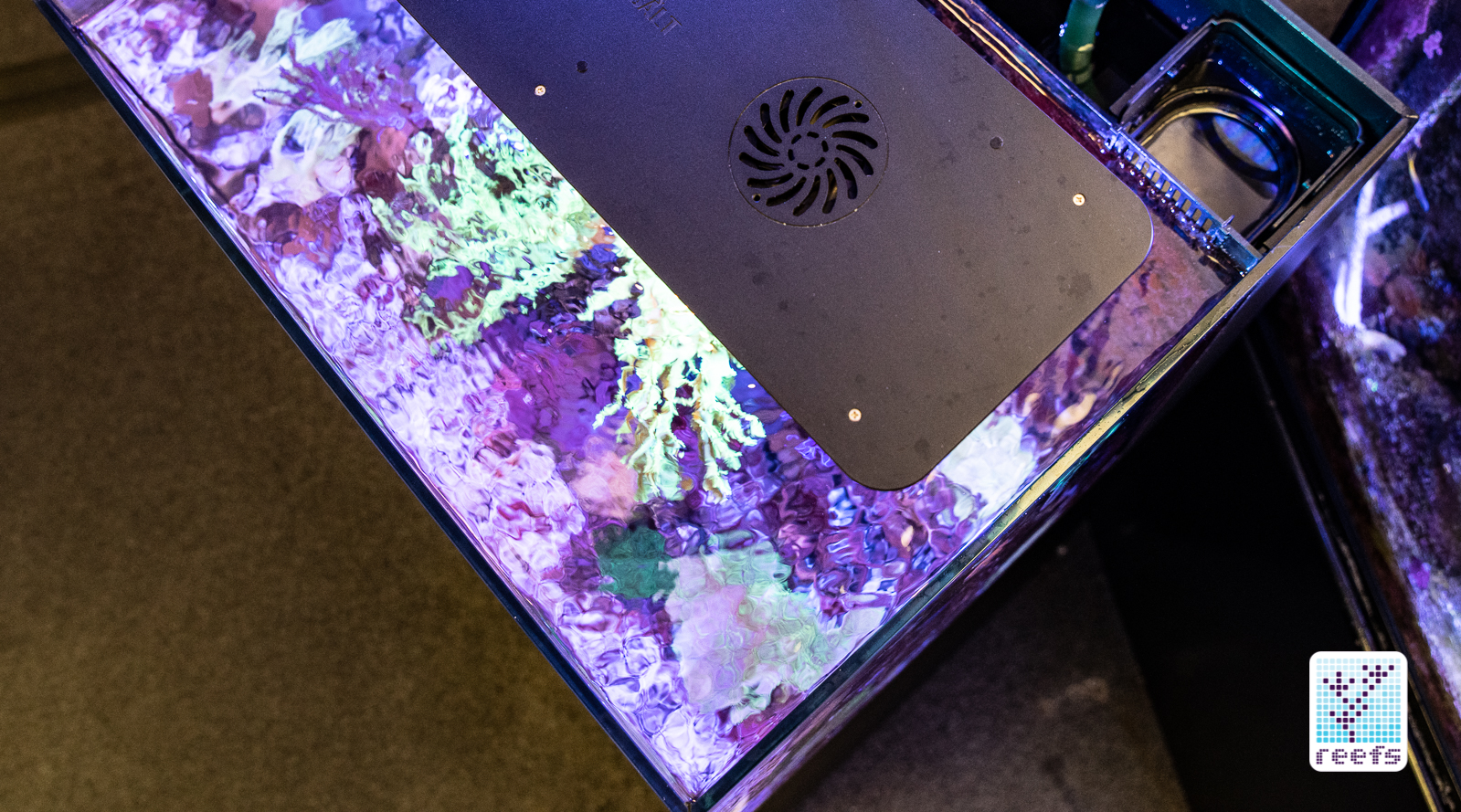
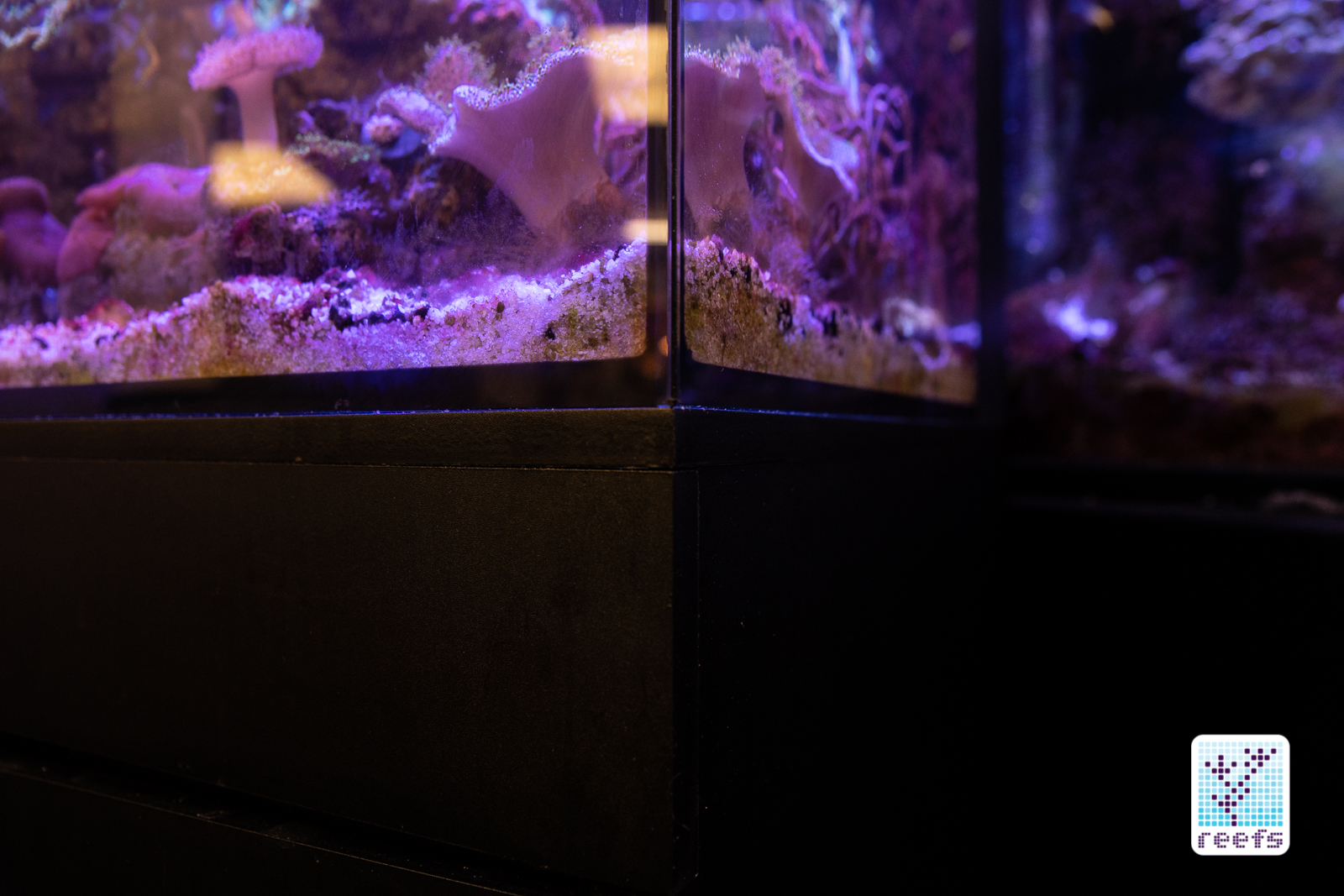








0 Comments